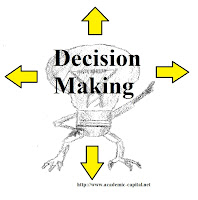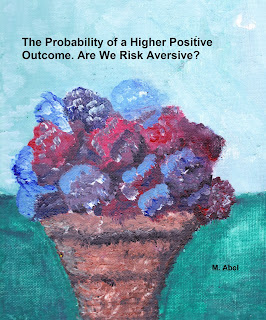Decision-making is an important skill for young college graduates to learn. The concept of decision making can be seen as the ability to evaluate alternatives in order to develop appropriate methods to obtaining goals (Edwards & Tversky, 1967). The more effective a person is in developing their decision making skills the more effective they will be in designing strategy.
One of the main criteria for any executive is to
develop and implement strategy. One must think through all of the possible
outcomes, understand the situation in it’s entirely, and then implement a
program that effectively makes its way to an appropriate outcome. This is a
complex and informational laden task that can be difficult on a macro scale.
Decision making skills can be improved with time and effort. For college
students they learn these concepts in strategic management while others may
learn them in corporate training. Improvement of such skills depends on the
strength of that instruction and training (David & Maiyo, 2010). Learning
the overall processes and hierarchical decision-making components of strategic
thinking is a long-term process.
A study by Dr. Alduaij (2012) attempted to assess the business
decision making ability of students at the University of Kuwait. A sample
of 200 students from the first and fourth year of the university was used
within the testing. Two fundamental questions were applied which included the
decision-making ability of the students as well as any gender differences. The
scale used 56 items to measure 8 decision-making skills.
Results:
-Business students were above average in suggesting alternative skills and
identifying the problem skill.
-Business students were above average in determining the goals skill, thinking
of the requirements of decision-making skill, ordering of alternative skills,
and choosing the best alternative skill.
-Business students had average implementation skills.
-Business students had below average consultation skills.
-No significant differences between males and females.
-Decision-making ability increased over the years of educational attainment.
Analysis:
Decision-making ability is developed overtime through education and
training. Decision-making is part of strategic thinking and requires the
ability to critically think about the various components of a decision as well
as the possible outcomes. Students have significant differences in ability
between first and fourth years of education. Genders did not appear to have an
influence on ability. In the case of students from the University of Kuwait the
ability of consultation with others is lacking. Such deficits may be culturally
based upon the students socialization.
Author: Dr. Murad Abel
Alduaij, H. (2012). A study of business administration college student’s
decision-making skills at Kuwait University. International Journal
of Business and Social Science, 3 (2).
David, M,. & Maiyo, J. (2010). Participatory Decision Making in
Secondary Schools. Problems of Education in the 21st Century; Vol (21),
120-133.
Edward, W., & Tversky, A. (1967). Decision Making
Selected Readings, Penguin Modern Psychology Readings. Clipper Mill Road
Baltimore, U.S.A.
KP4XGT52P4JZ

